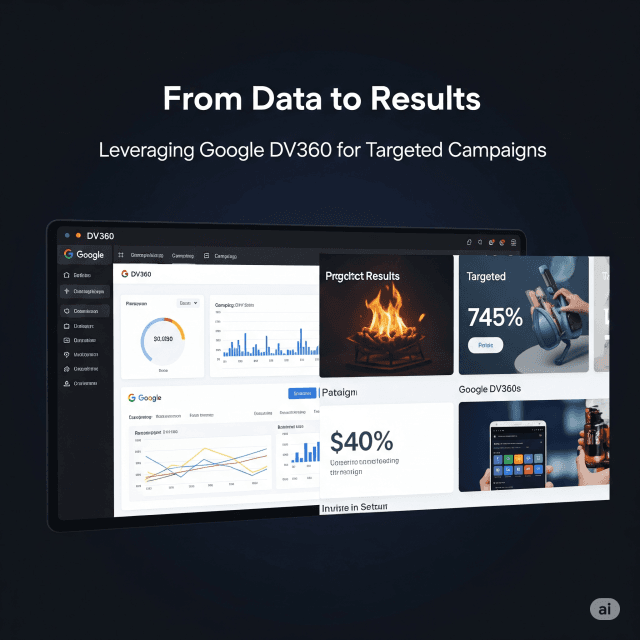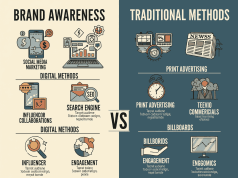In today’s digital marketing landscape, the ability to utilize data effectively can set brands apart in their quest for consumer engagement and conversion. Google’s Display & Video 360 (DV360) offers marketers a powerful platform for managing and optimizing advertising campaigns across various channels. This article delves into how businesses can leverage DV360 to transform data into actionable insights and targeted campaigns that yield measurable results.
Understanding Google DV360
Google DV360 is an integrated platform that combines media buying, audience targeting, creative management, and campaign analytics. It allows marketers to execute programmatic advertising strategies across display, video, and mobile channels, providing a streamlined approach to digital advertising.
Key Features of DV360
Centralized Campaign Management: DV360 allows users to manage all aspects of their advertising in one place. This reduces complexity and improves efficiency in executing campaigns.
Extensive Audience Targeting: The platform offers advanced targeting options, including demographic, geographic, and interest-based targeting. This ensures that ads reach the right audience at the right time.
Creative Optimization: With DV360, marketers can upload various ad formats and dynamically optimize them based on performance data. This helps in continually improving engagement rates.
- Real-Time Analytics: The platform provides comprehensive analytics capabilities, allowing marketers to track performance across various metrics in real-time. Insights can be gleaned quickly, enabling swift adjustments to campaigns.
Transforming Data into Insights
To harness the full potential of DV360, marketers must begin by collecting and analyzing data. Here’s how to transform that data into actionable insights:
1. Define Clear Objectives
Before diving into data analysis, it’s crucial to set clear campaign objectives. Whether the goal is brand awareness, lead generation, or sales conversions, having well-defined goals will guide the data analysis and targeting process.
2. Utilize First-Party Data
Leveraging first-party data—information directly collected from your audience—enhances targeting precision. Utilize customer data from CRM systems, website interactions, and email campaigns to build detailed user profiles.
3. Analyze Audience Segments
DV360 allows you to create audience segments based on various parameters. Analyzing these segments helps marketers understand behavior patterns and preferences, enabling tailored messaging. Segmentations could be based on:
- Demographics: Age, gender, location
- Interests: Hobbies, shopping habits
- Behavior: Past purchases, website interactions
4. Implement Conversion Tracking
Setting up conversion tracking is vital for measuring campaign effectiveness. By linking DV360 with Google Analytics and other tracking tools, marketers can monitor performance in real-time and adjust campaigns based on tangible data.
Crafting Targeted Campaigns
Once you’ve analyzed the data, it’s time to execute targeted campaigns. Here are some strategies:
1. Dynamic Creative Optimization (DCO)
DV360’s DCO feature enables marketers to personalize ads for different audience segments. This means that the creative can change based on user data, making the ad more relevant and increasing the likelihood of conversion.
2. Retargeting Campaigns
Leverage retargeting strategies to reconnect with users who have previously interacted with your brand. By showing tailored ads to this audience segment, you can drive higher conversion rates.
3. Automated Bidding Strategies
Utilize DV360’s automated bidding strategies to optimize ad placements based on your objectives, whether maximizing conversions or return on ad spend (ROAS). This ensures that your budget is allocated effectively.
4. A/B Testing
Constantly test different variations of your ads. DV360’s ability to run A/B tests helps determine which creatives and messages resonate most with your target audience, leading to higher engagement and conversions.
Measuring Success
The beauty of using DV360 lies in its robust analytics capabilities. Marketers can monitor key performance indicators (KPIs) such as:
- Click-through rates (CTR)
- Conversion rates
- Cost per acquisition (CPA)
- Return on ad spend (ROAS)
Regularly reviewing these metrics allows for agile campaign adjustments, ensuring better results over time.
Conclusion
In a world inundated with information, marketers must be adept at transforming data into meaningful insights and targeted strategies. Google DV360 proves to be a powerful ally in this endeavor, offering tools and capabilities that can enhance campaign effectiveness significantly. By leveraging DV360’s features, businesses can not only streamline their digital marketing efforts but also achieve measurable results that drive growth and engagement in an increasingly competitive landscape. Harnessing the power of data through DV360 is not just an option—it’s a necessity for brands looking to thrive in the digital age.









